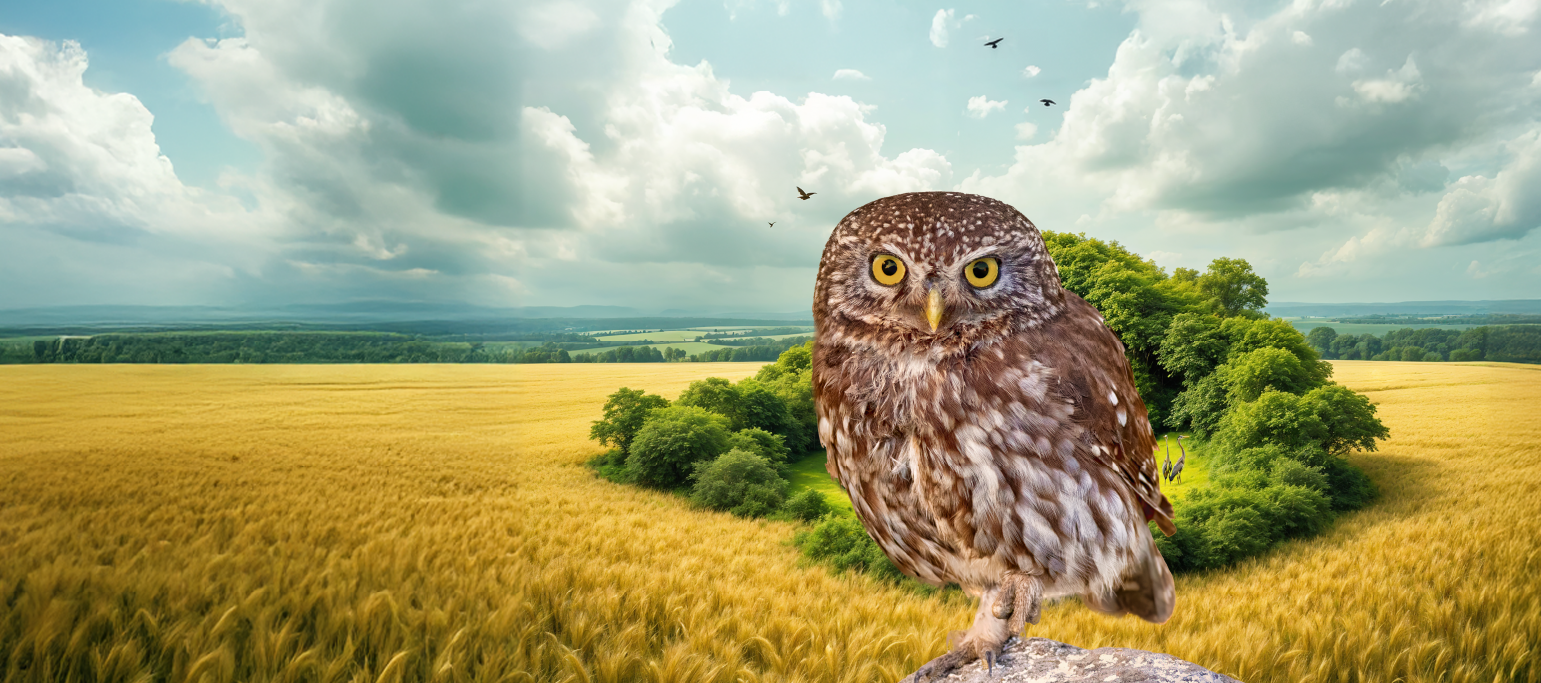Fighting cats, screaming children, barking dogs… those who hear them for the first time rarely imagine the sound was made by owls. But once you’ve identified it, the call of the Little Owl becomes unmistakable. Cries that echo across our fields when these owls respond to each other in defence of their territories, especially before they start breeding. Between the racket they make and the ease with which they can be observed, you could be forgiven for thinking that this species is far from endangered — but unfortunately, the data tells a different story.
The most diurnal of our owls, the Little Owl can often be seen perched conspicuously on a pile of rocks, on a ruin or on a stone wall, scanning the ground in search of prey. This small owl is no bigger than a blackbird and mainly hunts insects and small mammals — prey that is becoming increasingly scarce due to agricultural intensification and the excessive use of toxic chemicals.
As well as having less and less food to eat, the Little Owl is left with fewer and fewer places to nest: old trees and old buildings (with cracks and holes for nesting) are increasingly rare in our countryside. It’s not even safe on the move: this species is frequently run over.
The impact of these threats has already begun to be felt: the results of the Common Bird Census reveal that the species has suffered a significant decline over the last 20 years in Portugal. A trend corroborated by data from NOCTUA (the national nocturnal bird census), which showed a 50 per cent decline between 2010 and 2022. International data also shows declines in the species in the Iberian Peninsula and Europe.
For now, the soundtrack of our fields is still punctuated by the shrill calls of Little Owls- but until when?
Don’t let silence take over our countryside. Help us to create a national Bird Santuary Network:







